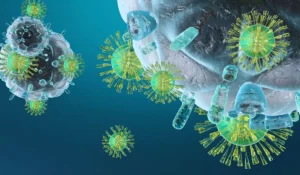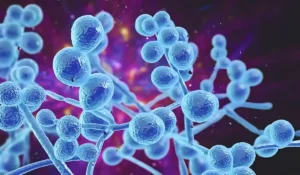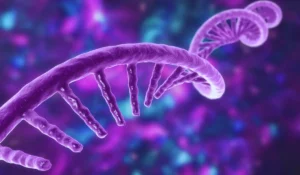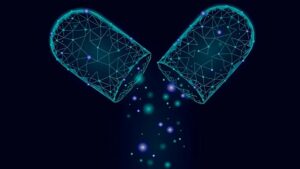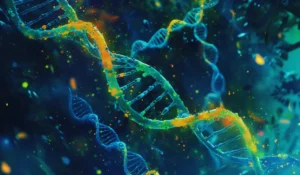What is Lesch-Nyhan Syndrome?
Lesch-Nyhan syndrome is referred to as a rare genetic disorder that results in too much of uric acid in the blood leading to kidney, joint, behavioral and neurological issues.
In general, every cell has both DNA and RNA, which are made up of nucleotides. The nucleotide in DNA is deoxyribonucleotide and nucleotide in RNA is ribonucleotide.
The main components of nucleotides are a sugar, a deoxyribose (if it is DNA), a ribose (if it is an RNA), 1 to 3 phosphate groups, a nucleobase that is either pyrimidine or purine.
Talking about pyrimidines, there are 3 pyrimidine bases namely cytosine, thymine and uracil and coming to purines, there are 2 purine bases namely adenine and guanine.
Nucleobases in DNA are adenine, guanine, cytosine and thymine. RNA contains uracil instead of thymine and the rest of the nucleobases are the same.
Therefore, a ribose-containing monophosphatic adenine nucleotide is called Adenosine MonoPhosphate or AMP.
How do our cells synthesize nucleotides?
Cells generate nucleotides by 2 ways: One is the standard de novo synthesis whereby nucleotides are made from scratch from precursor molecules and the other is the salvage pathway wherein degraded nucleotides are recycled.
Let’s talk about the salvage pathway, particularly the purine salvage pathway.
Considering Guanosine Monophosphate or GMP, at first ribose and the phosphate from is removed by the enzyme purine nucleoside phosphorylase and is converted to guanine.
Then the amino group from guanine is removed and it is converted into xanthine by the enzyme, guanase. Lastly, the enzyme xanthine oxidase oxidizes xanthine to uric acid.
Again, considering Adenosine Monophosphate or AMP, at first the amine group from AMP is removed by enzyme AMP deaminase and it is converted to IMP.
Then phosphate and ribose are removed from IMP and it is converted to hypoxanthine by the enzyme, purine nucleoside phosphorylase.
Lastly, the enzyme xanthine oxidase double oxidizes hypoxanthine to xanthine and then to uric acid. The uric acid formed is then filtered out of the blood and is excreted via urine.
The intermediate molecules formed during purine degradation, i.e. guanine and hypoxanthine, are re-established to fresh new nucleotides via this salvage pathway.
During this process, an enzyme called hypoxanthine-guanine phosphoribosyl transferase or HGPRT puts back the ribose and phosphate to guanine and hypoxanthine forming GMP and IMP respectively. From IMP, AMP can be formed as well.
What Causes Lesch-Nyhan syndrome?
However, in Lesch-Nyhan syndrome, there occurs mutation in the HGPRT gene that is located on the X chromosome.
Therefore, Lesch-Nyhan syndrome is an X-linked recessive disorder which generally affects males. It is because if males get 1 mutation, they get the disease, while in females, if they get 1 mutation, they become carriers and if they get 2 mutations, it leads to disease.
Also, the mutation can sometimes occur spontaneously instead of being inherited from parents.
Besides, an HGRPT gene mutation means that there is reduced functional enzyme resulting in purine degradation to uric acid i.e. there will be no recycling of purine bases.
And due to this decreased recycling, the other pathway, the de novo purine synthesis pathway, boostens up resulting in more and more purine degradation to uric acid.
This increased levels of uric acid lead to uric acid accumulation in blood causing hyperuricemia.
Initially, kidneys attempt to recoup by shooting up the removal of uric acid into urine referred to as hyperuricosuria.
However, as the disease advances, there is precipitation and crystallization of uric acid resulting in the formation of urate stones which are blocked in the urinary tract, clogging the flow in ureters, bladder or urethra.
As a result, the excess uric acid starts to get lodged in the tissues in the form of urate crystals as the kidneys are no longer able to keep up the same.
These urate crystals specifically act on the kidney’s interstitium leading to urate nephropathy or deposit in regions where there is decreased or slow blood flow around the body such as just below the skin along the bones or within joint space.
In addition to it, increased uric acid levels appear to cause a decrease in dopamine levels and activity (Dopamine is a neurotransmitter found in the brain). So, this decreased dopamine influences one’s behavior and emotions. However, the reason behind this dopamine drop is unknown.
What are the symptoms of Lesch-Nyhan syndrome?
Symptoms usually begin during the first year of life. At times, the uric acid forms minute orange sand-like urate crystals which travel through the urinary tract and land up in the infant’s diaper.
While in a different way, the uric acid forms large urate crystals that get lodged in the urinary tract causing strong pain, irritability and hematuria or blood in urine and urinary tract infections.
In older children and adults, there is deposition of urate crystal all over the body, especially in kidneys gradually leading to kidney failure and tophi or chalky lumps seen under the skin of elbows, earlobes, knees and fingers.
Furthermore, this deposition of urate crystals also gets deposited within the joints, specifically within the first metatarsal joint of the foot or the base of big toe giving rise to a form of inflammatory arthritis called gout.
Gout is often experienced as attacks of extreme joint pain, redness, swelling and warmth which lasts for days or weeks.
Lesch-Nyhan syndrome affected people also experience neurological problems including hypotonia or reduced muscle tone and have a delay in reaching childhood milestones – like walking and talking.
The common neuromuscular symptoms seen in Lesch-Nyhan syndrome are dystonia, chorea, and ballismus.
Dystonia is a movement disorder that causes the muscles to contract involuntarily ; Chorea is a type of involuntary movement affecting the proximal limb musculature, manifested in jerking, flinging movements of the extremity; Ballismus is a neurological disorder characterized by jerky involuntary movements affecting especially the shoulders, hips, and face.
Individuals with Lesch-Nyhan syndrome typically have compulsive and aggressive behavior leading to self-injury like nail biting, finger biting or head banging.
How is Lesch-Nyhan syndrome diagnosed?
Diagnosis can be started by detecting increased uric acid levels in the blood and urine, but it is confirmed by genetic testing to pinpoint gene mutation and reduced HGPRT activity.
What is the treatment for Lesh-Nyhan syndrome?
Allopurinol which is a drug that inhibits xanthine oxidase leading to inhibiting the hypoxanthine and xanthine metabolism to uric acid, is given to reduce uric acid levels.
For kidney stones, shockwave lithotripsy is used which employs high-intensity acoustic pulses that move through the body to smash the stones.
It is extremely difficult to control the neurological and behavioral issues, however, anxiety medication like benzodiazepines in combination with behavioral-modification techniques are given to reduce anxiety.
Quick summary
Lesch-Nyhan syndrome is an X-linked recessive condition caused by mutation in the HGPRT gene that is located on the X chromosome and it blocks the purine salvage pathway.
End result is hyperuricemia and hyperuricosuria leading to kidney stones, gouty arthritis, neurological and behavioral problems.

